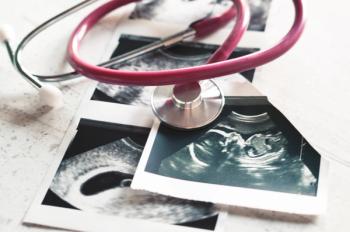
Health-System Pharmacists: What's in Your Crash Cart?
Certain items are must-haves in any crash cart during a hospital code.
Certain items are must-haves in any crash cart during a hospital code.
At the 2015 American Society of Health-System Pharmacists (ASHP) Midyear meeting, Andrew North, PharmD, BCPS, of the Ohio State University Wexner Medical Center described what a typical crash cart might look like.
Being familiar with available medications can help pharmacists and other members of the emergency care team streamline procedures during a code, which can help reduce the
“Most institutions will have a similar set of medications within their crash carts, [although] the location of them may differ amongst institutions,” Dr. North explained.
Pharmacists should stock the following medications in crash carts to fully prepare for a hospital code:
Epinephrine
Dr. North explained that epinephrine is used every 3 to 5 minutes during a code, so pharmacists and other members of the emergency care team should make the drug easily accessible on the crash cart.
“It’s pretty much the main medication we use in most cases,” he said.
Amiodarone
Amiodarone is primarily indicated to treat ventricular fibrillation (VF) and ventricular tachycardia (VT) that occurs during cardiac arrest.
Advanced cardiac life support (ACLS) guidelines recommend using amiodarone only after epinephrine and vasopressin have failed to convert VF/VT.
Atropine
Atropine is used to help keep heart rates stable after a heart attack. However, it has been removed from the ACLS guidelines due to a lack of clear benefit.
Calcium
Calcium is important for the strength of contraction of cardiac tissue. It is used to stabilize myocardium and help get a patient out of a lethal rhythm.
Sodium Bicarbonate
Sodium bicarbonate is used when the code response team believes that the patient may be acidotic because the drug helps to increase serum PH, which in turn could prevent further coding.
Vasopressin
Vasopressin is a primary drug used in the pulseless arrest algorithm. Similar to atropine, however, vasopressin has been removed from the ACLS guidelines due to a lack of clear benefit.
Craig Cocchio, PharmD, BCPS,
Dopamine
Dopamine can be used to treat insufficient cardiac output and for hypotension. During a code situation, it can act as a vasodilator, which brings better circulation to the brain, myocardium, and kidneys.
Naloxone
Dr. North explained that crash carts sometimes contain
Beyond medications, Dr. North discussed other items that code team members are likely to find in their crash carts.
“Similar to medications, most institutions will have similar items in their crash carts,” Dr. North explained to Pharmacy Times. “It will depend on the institutions’ specific needs, specific situations, and what might be readily available.”
The non-drug items Dr. North says health care providers can count on include syringes, saline flushes, intravenous placement sets, airway and respiratory equipment, and incubation kits.
Additionally, there are items in the crash cart intended to protect the members of the emergency care team from any safety hazards that may be associated with providing care during a code. These items likely include a sharps container, gloves, gowns, and masks in order to protect against blood-borne illnesses.
Pharmacists and other members of the care team who provide direct patient care should
Newsletter
Stay informed on drug updates, treatment guidelines, and pharmacy practice trends—subscribe to Pharmacy Times for weekly clinical insights.






































































































































































































